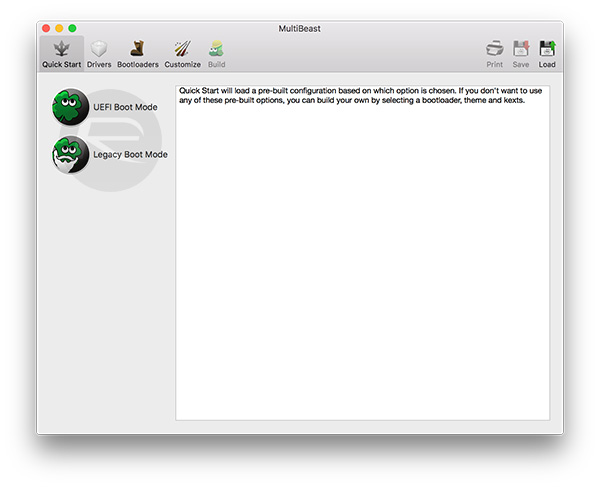How To Install Chameleon Bootloader On Usb Using Windows Keyboard
Setting up Mac OS X on a PC carries its own inherent risks; despite the fact that Hackintoshes are generally very stable, there's always a chance that your computer will fail to start, for whatever reason. In these cases, your best option may be to temporarily boot Mac OS X with the help of a boot USB drive. From there, you can fix whatever problem your Hackintosh is experiencing.

Chameleon 2.1 latest version download links updated! After installing this new chameleon bootloader my lion. Write usb with gburn but only windows NTFS hard. More How To Install Chameleon Bootloader On Usb Using Windows Keyboard videos.
Your can act as backup boot USB drive, but if you don't have yours anymore, you're not out of luck-- you can still create a makeshift boot USB drive on Windows instead. Requirements Hackintoshes generally use Chameleon or Chimera bootloader () to boot Mac OS X. If you own a real Mac, you can just download the PKG installer for Chameleon bootloader and install it onto a USB drive in a single click. However, on Windows, the process is more complicated.

In this guide, we will be manually writing the necessarily bootloader files from Chameleon onto a USB drive through a series of command-line tools in Windows. Here's what you'll need: • An empty USB drive - This USB drive can be any size; it doesn't really matter, since the Hackintosh bootloader will only take up a few megabytes. We'll be erasing this drive, so make sure you back up any files that you have on it. • - A collection of command-line tools that you'll need to create a boot USB drive in Windows.
Switch Sound File Converter Keygen 4.47 more. • - The main boot file that Chameleon bootloader will need to start Mac OS X. This file was extracted from the newest version of Chameleon bootloader (as of July 1st, 2013), and can boot any version of Mac OS X, including OS X 10.9 Mavericks.
• - A collection of additional and configuration files necessary to get Chameleon bootloader working properly with Mac OS X. This folder should allow most standard Hackintosh setups to boot properly, though you can add your own specific kext files if you wish. Replace 'Username' with your Windows username (include the quotation marks).
In the screenshot below, I've replaced my Windows username with a blank line. This command changes the folder that the Command Prompt is working on (cd stands for 'change directory'). Now, everything you type into the Command Prompt will apply to the files in the Chameleon_BS folder. This assumes that you put the Chameleon_BS folder on the desktop-- if you put it somewhere else, you may edit the command appropriately. Next, enter the following command: makeusb Letter: Replace 'Letter' with the actual letter of your USB drive (don't include the quotation marks). In the screenshot below, the letter of my USB drive is 'O'.
This command sets up the USB drive so that it'll be ready to boot Mac OS X. Cara Pembuatan Modul Pembelajaran Pdf. Once the Command Prompt finishes working (it'll probably only take a few seconds), eject your USB drive from your computer. Then, plug the USB drive in again; this is necessary to get Windows to recognize your newly set-up USB drive properly. Copy the boot files onto the USB drive Finally, you'll need to copy several extra boot files onto the USB drive.
Download the 'boot' file and 'Extra' folder; these are necessary files for the Mac OS X startup process. DOWNLOAD: DOWNLOAD: The 'Extra' folder will be stored inside a ZIP file. Double-click on the ZIP file to open it. Copy the 'Extra' folder into your USB drive. Next, download and copy the 'boot' file onto your USB drive as well.
Asus N53SV I7 Sandybridge 6GB ram Native Apple intelcpu management I upgraded to yosemite via unibeast. I had to boot from the usb stick because my bootloader kept saying can't find kernel_mach. So the installation went smooth but the problem is that in order to boot into yosemite, I have to use the bootloader from the usb stick. How do I update my bootloader on the hardrive to avoid this?
I've installed clover and my EFI filesystem has the EFI, BOOT and Extra folders. It appears that my system is still using chameleon for some reason. The other thing is that my ApplePS2Elantrackpad.kext isn't being loaded so I cannot use the mouse and keyboard. Anyone have an idea how to fix these issues? Asus N53SV I7 Sandybridge 6GB ram Native Apple intelcpu management I upgraded to yosemite via unibeast. I had to boot from the usb stick because my bootloader kept saying can't find kernel_mach.
So the installation went smooth but the problem is that in order to boot into yosemite, I have to use the bootloader from the usb stick. How do I update my bootloader on the hardrive to avoid this?
I've tried re-installing clover and my EFI filesystem has the EFI, BOOT and Extra folders. It appears that my system is still using chameleon for some reason. The other thing is that my ApplePS2Elantrackpad.kext isn't being loaded so I cannot use the mouse and keyboard. Anyone have an idea how to fix these issues? Click to expand.Look in system.log for USB related messages that might help troubleshoot the problem. Also, Please provide complete details in your profile/signature (Profile/Settings link in upper right corner of this site) System: manufacturer/model CPU: detailed CPU model + motherboard chipset Graphics: all graphics devices + laptop internal screen resolution For example, typical Ivy laptop: System: HP ProBook 4540s CPU: i5-3320m/HM76 Graphics: HD4000, 1366x768 Use CPU-Z on Windows to find CPU (Core iX-xxx) and motherboard chipset (HMxx), and graphics capabilities. For a laptop, these details are important and affect critical installation procedures.